Talk:Alternative medicine
| This is the talk page for discussing improvements to the Alternative medicine article. This is not a forum for general discussion of the article's subject. |
Article policies
|
| Find medical sources: Source guidelines · PubMed · Cochrane · DOAJ · Gale · OpenMD · ScienceDirect · Springer · Trip · Wiley · TWL |
| The contentious topics procedure applies to this page. This page is related to complementary and alternative medicine, which has been designated as a contentious topic. Editors who repeatedly or seriously fail to adhere to the purpose of Wikipedia, any expected standards of behaviour, or any normal editorial process may be blocked or restricted by an administrator. Editors are advised to familiarise themselves with the contentious topics procedures before editing this page. |
| The subject of this article is controversial and content may be in dispute. When updating the article, be bold, but not reckless. Feel free to try to improve the article, but don't take it personally if your changes are reversed; instead, come here to the talk page to discuss them. Content must be written from a neutral point of view. Include citations when adding content and consider tagging or removing unsourced information. |
| This article is of interest to the following WikiProjects: | ||||||||||||||||||||||||||||||||||||||||||||||||||||||||||||||||||||||||||||||||||
| ||||||||||||||||||||||||||||||||||||||||||||||||||||||||||||||||||||||||||||||||||
| Whole medical systems was nominated for deletion. The discussion was closed on 13 September 2012 with a consensus to merge. Its contents were merged into Alternative medicine. The original page is now a redirect to this page. For the contribution history and old versions of the redirected article, please see its history; for its talk page, see here. |
| On 7 March 2013, it was proposed that this article be moved to Complementary and alternative medicine. The result of the discussion was not moved. |
Frequently asked questions
Science Q1: Where does the statement that alternative medicine is not evidence-based or scientific come from?
A1: The source for this statement is a report produced by the National Science Foundation, which—while surveying scientific beliefs among the public—used the term "alternative medicine" to refer to all treatments that had not been proven effective using the scientific method. The report went on to describe the American Medical Association definition as "neither taught widely in U.S. medical schools nor generally available in U.S. hospitals." The source is different than the definitions used by major medical bodies and its use as a primary source is not consistent with Wikipedia's guideline on identifying reliable medical sources, but its inclusion remains important to some and a point of contention to others. Q2: Why don't I see lots of references in the lead?
A2: To keep the lead from looking like a jungle with all the references which are actually used, they have been hidden from view, but are visible when in the editing mode. If a reader has a serious question about the sourcing for a statement in the lead, they can start a thread on this talk page and request to see the reference(s). Then, an editor will unhide that reference for them. |
|
Index 1, 2, 3, 4, 5, 6, 7, 8, 9, 10 11, 12, 13, 14, 15, 16, 17, 18, 19, 20 21, 22, 23, 24, 25, 26, 27, 28, 29, 30 |
|
Old discussions at Talk:Complementary and alternative medicine Archive 1, Archive 2, Archive 3 |
|
This page has archives. Sections older than 15 days may be automatically archived by Lowercase sigmabot III when more than 8 sections are present. |
Marketing using "non-scientific explanations": definition and section
The content in Medical Hypotheses mentioned above reminds med of a needed addition to the definition. An older version contained an important fact which is now missing. It concerns how alt med is marketed ("put forward"). This is nearly always done using "non-scientific explanations" of many kinds. Some are clothed in pseudoscientific language, and others are outright deceptive fabrications made from whole cloth:
- Older version: Alternative medicine is any practice that is put forward as having the healing effects of medicine,..." (my bolding)
- Newer version: Alternative medicine is any practice that is perceived by its users to have the healing effects of medicine,..."
I suggest we add this content so it looks something like this:
- Alternative medicine is any practice that is marketed as having, or perceived by its users to have, the healing effects of medicine,..."
I place it first because marketers are the driving impetus which keeps alt med alive at all. Without them, scientific enlightenment would have more success and quackery would die out to a great degree. The average person uses alt med because worthless products and services are being marketed as if they are of equal or "safer" value than mainstream medicine. This is the quackery aspect which accompanies nearly all alt med. We should not ignore this in the definition.
Since content in the lead must be based on existing content in the body, a separate section dealing exclusively with marketing, using typical examples of egregious advertising and claims (usually using "non-scientific explanations"), should be created. We make very small mention of marketing a few places in the article (search the page for "promo" and "market"). Such a section would have great informational value. The articles on quackery and pseudoscience might have some usable content and sources. -- BullRangifer (talk) 17:32, 6 June 2015 (UTC)
- I added much re "marketing" from good early sources to the history section.[1]. The 1983 quotes from BJM are particularly on point about marketing - "an apparently endless stream of books, articles, and radio and television programmes urge on the public the virtues of (alternative medicine) treatments ranging from meditation to drilling a hole in the skull to let in more oxygen". I did not delete any content, but the previously existing history section was mostly about the histories of biomedicine and "irregular practices", with very little on the history of "alternative medicine" as a collectively marketed group. FloraWilde (talk) 18:51, 28 June 2015 (UTC)
Please be careful. The claim that "marketers are the driving impetus which keeps alt med alive at all" is certainly dubious. While I have no "reliable source" with actual statistics, my personal experience is that I know a great number of people (myself being one) that have ailments that mainstream medicine is unable to correctly diagnose (based on the fact that multiple mutually exclusive diagnoses have occurred and the persistence of the ailments in spite of mainstream medicine's best efforts). Until mainstream medicine explains every chemical and biological process that goes on in the human body, I believe there will always be a market for alternative medicine. I am not saying that marketing isn't an important driver, just that I think it should be pointed out that the market exists for a reason besides just "marketing".192.249.47.204 (talk) 19:17, 18 September 2015 (UTC)
$$$ Reward levels for editing the science out of alt med articles? Need for sources on alt med marketing schemes.
This edit says, "Classifying Alternative Medicine as pseudoscience... Wikipedia is on a misinformation campaign against alternative health and the healing arts... Natural health deserves fair representation.... We’re going to set the record straight. We need your help and invite you to get involved in the process. Please check the various reward levels to discover how to participate."
An editor on this talk page suggested more is needed on these kind of marketing schemes by alt med promoters, to create the illusion of scientific justification, biological plausibility, or that there may be energies undiscovered by physics that alt med studies can reveal by "systematic reviews" that admit to using imperfect studies, yet get published as showing efficacy anyway. Does anyone have RS sources for these marketing strategies? FloraWilde (talk) 15:27, 26 June 2015 (UTC)
- Hi Flora, this looks worrisome. Could you please cross-post this to WT:MED and WP:FT/N? Alexbrn (talk) 15:29, 26 June 2015 (UTC)
When I posted notice of discussions on more than one talk page, User:AndyTheGrump asked me to "please stop forum shopping". FloraWilde (talk) 16:31, 26 June 2015 (UTC)
- Yes - at Talk:Reason. Acupuncture has nothing whatsoever to do with the topic of that article. AndyTheGrump (talk) 16:34, 26 June 2015 (UTC)
- I made an error, and failed to provide links and full explanation of my talk page posts. I am collapsing this as offtopic to this talk page section. FloraWilde (talk) 17:21, 26 June 2015 (UTC)
- Yes - at Talk:Reason. Acupuncture has nothing whatsoever to do with the topic of that article. AndyTheGrump (talk) 16:34, 26 June 2015 (UTC)
- @ ALexbrn, I posted at the suggested talk pages. FloraWilde (talk) 17:21, 26 June 2015 (UTC)
Uncollapsed for transparency at a glance. 121.211.33.244 (talk) 17:59, 15 February 2016 (UTC)
Trouble archiving links on the article
Hello. I am finding myself repeatedly archiving links on this page. This usually happens when the archive doesn't recognize the archive to be good.
This could be because the link is either a redirect, or I am unknowingly archiving a dead link. Please check the following links to see if it's redirecting, or in anyway bad, and fix them, if possible.
In any event this will be the only notification in regards to these links, and I will discontinue my attempts to archive these pages.
Cheers.—cyberbot IITalk to my owner:Online 19:31, 13 July 2015 (UTC)
External links modified
Hello fellow Wikipedians,
I have just added archive links to 2 external links on Alternative medicine. Please take a moment to review my edit. If necessary, add {{cbignore}} after the link to keep me from modifying it. Alternatively, you can add {{nobots|deny=InternetArchiveBot}} to keep me off the page altogether. I made the following changes:
- Added archive https://web.archive.org/20071011062659/http://www.childwelfare.gov/systemwide/laws_policies/statutes/define.pdf to http://www.childwelfare.gov/systemwide/laws_policies/statutes/define.pdf
- Added archive https://web.archive.org/20150626140649/http://www.ama-assn.org/ama/pub/article/2036-2432.html to http://www.ama-assn.org/ama/pub/article/2036-2432.html
Cheers.—cyberbot IITalk to my owner:Online 19:31, 13 July 2015 (UTC)
Split
Comeplementary Medicine and Alternative Medicin are quite different topices. I ask to split the article in two.
Rationale: Complementary is often part of normal healthcare and mainstream practices (compare e.g. doi: 10.1055/s-0033-1364013 Complementary and alternative medicine in the German outpatient setting: extent, structure and reasons for provision), alternative is much less in use. Quote "Es ist davon auszugehen, dass CAM hauptsächlich als Ergänzung (komplementäre Anwendung) und nicht als echte Alternative zur Schulmedizin Verwendung finden und von einem Groß- teil der Bevölkerung in Europa, Nordamerika und anderen industrialisierten Regionen in Anspruch genommen werden", English summary: A large amount of people in Europe, North america and other industrialized countries use CAM, as part of a complementary offer of mainstream medicine, not as an true alternative.
Thats said, the article title currently is an example of Wikipedia:Coatrack - it critisises an nonexisting alternative use and ignores the wolrd wide (compare the WHO and WTO traditional medicine strategy) actually practice, which is about complementary. Polentarion Talk 14:44, 20 December 2015 (UTC)
- We have had this discussion many times, with several RfCs, and the decision to merge the articles (Alternative medicine, Complementary medicine, and Integrative medicine) was not made lightly. (Traditional medicine is a separate topic.) A condition for the merge was that each be mentioned and defined here, and they are. The archives contain many discussions about this and how the clear consensus was reached. Some fringe proponents will never be happy with that decision, but so be it.
- One of the major reasons is that the techniques and methods are all the same, and they are covered here. It is only the setting that changes, and that is described in this article. The evidence base is also the same, even though proponents of Complementary medicine claim otherwise. Their claims are mere marketing.
- For some reason, Integrative medicine was resurrected and further developed, which of course provided a much better venue for the multiple criticisms against it. The same would happen if Complementary medicine was reestablished. Not only would the criticisms of the main uses of Alternative medicine be relevant there, the criticisms directed at the deceptive nature and claims made to justify quackademic medicine (complementary medicine) would get a better venue there than here.
- BTW, "alternative" is indeed the dominant way such methods are used in a totally unregulated market controlled by quacks. The fact that a few quacks exist in academia and mainstream hospital centers pushing for acceptance of quackery, and marketing it as "complementary" and "integrative", does not make such non-EBM methods anymore effective or proven. It's just the setting which has changed. After all these years, NCCAM has still failed to find evidence of effectiveness.
- This would always be the mother article, with summary style mention of each of those topics. Right now, instead of having separate sections for each one (only justifiable if there are separate sub-articles), we discuss them at Alternative medicine#Definitions and terminology. They should each be bolded there. I'll do that right now.
- So, in summary, we have previously had separate articles, and they were merged here. Unless you can provide a new argument for splitting, there is no reason to rehash this again. If you want to go to the bother and push for this, you've got a lot of homework to do in the archives. You'll need to study the previous arguments which have been rejected, and come up with new ones. If you choose to do that, I suspect we won't see you back here for a couple months, some time in the new year.
 Until then, let's leave off the tag and wait for a new section then. -- BullRangifer (talk) 21:06, 20 December 2015 (UTC)
Until then, let's leave off the tag and wait for a new section then. -- BullRangifer (talk) 21:06, 20 December 2015 (UTC)
- Point is, I dont need to check WP, I check real life studies. I am not much interested in dealing with WP internal conflicts, I am just aware of quality health studies which make a strong and reasonable difference between complementary and alternative. Complementary medicine works, alternative medicine works not. As said, what you seem to call "quackademic medicine" is currently in world wide use, based e.g. on the WHO and WTO Traditional medicine strategy and quite reasonable (evidence based) practices. The tendency to repeat "sceptical" polemics against a lot of quite different established medical and healthcare practices is a) not very in line with actual sourcing and b) tries to ignore the well established reasons and practical explanation for the world wide success of complementary medicine. As said, complementary works, alternative does not. WP should allow to show the difference. I would write a draft if needed. Polentarion Talk 02:19, 21 December 2015 (UTC)
- Wikipedia is based on RS from the real world. Anything else is original research. Go ahead and provide some properly sourced content to show us here. Then maybe we will be able to understand your point. If you succeed, you'll have success and we'll help you. -- BullRangifer (talk) 03:14, 21 December 2015 (UTC)
- Polentarion, I agree with BullRangifer's comments above, but you may like to have a look at the articles listed at Book:Alternative medicine. Qexigator (talk) 16:56, 21 December 2015 (UTC)
- Wikipedia is based on RS from the real world. Anything else is original research. Go ahead and provide some properly sourced content to show us here. Then maybe we will be able to understand your point. If you succeed, you'll have success and we'll help you. -- BullRangifer (talk) 03:14, 21 December 2015 (UTC)
- Sigh. I started with a RS, but I was told a lot about WP internals, and sceptical ideology. As said, doi: 10.1055/s-0033-1364013 clearly shows that complementary offers are part of mainstream medicine and why. The Bejing declaration, the WHO, WIPO, WTO Trilateral Cooperation on Public Health and the WHO traditional medicine strategy, which involves, among other complementary health practices are similar "complementary" approaches. They are not using "alternative medicin". That said, I asked to split the article here since this article covers two different topics. WP:I-don't like it doesnt help. Polentarion Talk 17:06, 21 December 2015 (UTC)
Polentarion, in my point 2 above, I stated: "the techniques and methods are all the same,... It is only the setting that changes,... The evidence base is also the same, even though proponents of Complementary medicine claim otherwise. Their claims are mere marketing."
So you are right that they "are not using "alternative medicin" (in the sense that they are not using it "instead" of real medicine), but they are still using the same methods, techniques, products, etc., and the (lack of) evidence base is the same. There is no evidence that use of AM in conjunction with mainstream medicine improves prognoses. For cancer it worsens the prognosis.
For better or worse, the methods are termed "alternative medicine", so they are discussed here. This is the mother/main article for all other articles which describe use of these methods. For "complementary" and "integrative", the main difference is the setting in which "alternative medicine"/quackery methods are combined with real medicine, and that can be done in a few sentences. Integrative medicine has an article where the comments in RS about the unique settings are made, but since this involves deceptive marketing attempts to blend ineffective quackery with evidence based medicine, the criticisms are also part of the article. Keep in mind that this is not about traditional medicine. -- BullRangifer (talk) 07:51, 23 December 2015 (UTC)
- The artcile should treat "alternative" in a short section and focus on "complementary". The real world does as well. I am sorry that I started to use a foreign language source here, but its about the worldwide situation and b) confirmed by the WHO. Its an established fact that a wide range of health practioners do not have any problem with the combination, and according the WHO, they should not have a problem. Reasons being described in the study. E.g. if a mainstream medic uses Acupuncture or homeopathy now and then, it improves the interaction between doctor and patient, enhances Compliance (medicine) and of cause it increases the range of possible treatments. Its obvious that a multitude of physical therapy, exercice, dieting, massage and relaxation techniques can be derived from CAM likewise, same as Jane Fonda (and her looks) was much more important for exercice than "science" or any study. Polentarion Talk 13:11, 23 December 2015 (UTC)
- Polentarion: If you can compose a paragraph about that, with sources, let us look at it here to see where it could go in the article. Qexigator (talk) 14:10, 23 December 2015 (UTC)
- That's a good suggestion, because these vague claims need to be backed up by sources. -- BullRangifer (talk) 06:10, 24 December 2015 (UTC)
- Polentarion: If you can compose a paragraph about that, with sources, let us look at it here to see where it could go in the article. Qexigator (talk) 14:10, 23 December 2015 (UTC)
Too many images?
As one goes down through the article, there is suddenly a clutter of many images. We really need to pare down on them. It makes for a messy article. Some of them are really good, so instead of just deleting them, why don't we create a gallery? While galleries are discouraged, they are not forbidden. We should also make many of them smaller and shorten the text.
Below are the images we are using: -- BullRangifer (talk) 21:40, 20 December 2015 (UTC)
- Yes, a gallery would be a good way to avoid the clutter: perhaps some visible, the rest drop down? But some could go, such as Sen. Harkin, Prince Charles and Edzard Ernst. Qexigator (talk) 00:22, 21 December 2015 (UTC), 00:30, 21 December 2015 (UTC)
- + I have gone ahead and removed those three person pics. Qexigator (talk) 09:39, 21 December 2015 (UTC)


- +Maybe we could put in the gallery the images for the various AMs, but retain in the text the two FDA cautionary notices. Qexigator (talk) 10:04, 21 December 2015 (UTC)
- +Then, maybe the proposed gallery would belong to the main section 'Types of alternative medicine', and could be placed at the end of that section, or at the end of the article, with a jump link at the top of the section. There are eight subsections, but, given that the various types shown in the images may belong to more than one classification, this is another good reason for putting them together in a single gallery. Qexigator (talk) 10:30, 21 December 2015 (UTC)
- I am going ahead with adding the proposed gallery of the images, except the three persons and the two FDA cautions mentioned above. If acceptable, the repeat images alongside the text could be removed. Qexigator (talk) 13:54, 21 December 2015 (UTC)
- + In "Types of alternative medicine" we now have four visible images: two products to be taken by mouth, of which one is western (homeopathy) and the other traditional Chinese; and two "energy" therapies, originating in the east and now practised in the west. That is a reasonable sampling of the 16 included in the gallery, while the gallery supports the lead sentence: AM "consists of a wide range of health care practices, products and therapies". Qexigator (talk) 11:15, 23 December 2015 (UTC)
- I don't think we'll find a prevalence of MEDRS support sufficient for describing this as "health care" or "therapy". More likely "interventions" or "treatments", which have no implication regarding efficacy. LeadSongDog come howl! 14:57, 23 December 2015 (UTC)
| Images |
|---|
| The following discussion has been closed. Please do not modify it. |
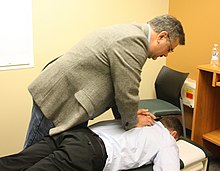 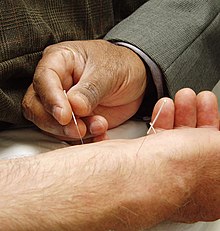        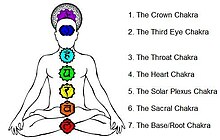     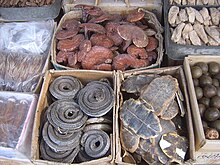 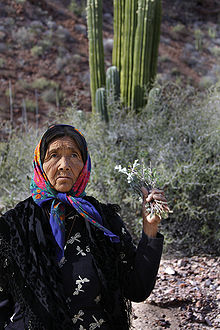   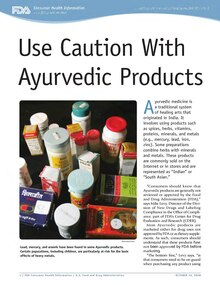 |
Images in gallery format
|
|---|
|
I've cleaned up a bit, but want to remind the editors here that while galleries are totally acceptable, hidden galleries are not. Check out WP:MOS & WP:MOSIMAGE. CFCF 💌 📧 12:08, 23 December 2015 (UTC)
Well, BullRangifer, back to clutter, per User:CFCF[2] If the gallery must be made visible, like it or not, perhaps it could be thinned out. Proposed deletes: Botánica, looks like any shop anywhere, A homeopathic remedy, looks like any small container, like a fuse in an electric plug, Tai chi, Yoga class, Qigong look like any sort of physical exercise regime. I am going ahead to remove them, and we can see what it looks like. Qexigator (talk) 14:35, 23 December 2015 (UTC)
- I think you've all done a great job and it looks much better. I removed one image from the gallery that seemed out of place for this article. That also makes the gallery only one line (at least on my screen). I notice that further down there are no images, so it needs something so it's not just a wall of text. I'm going to restore the three notable persons who were previously there and we can see how that looks. -- BullRangifer (talk) 06:00, 24 December 2015 (UTC)
- BullRangifer: Agreed, may be good to break up walls of text, but pics of persons in "History" (Sen.Haskin) and "Criticism" (Pr. Charles) look to me more like space-filling, in default if something more relevant. But if persons are acceptable, how about Marcia Angell. Another image could be Peking Union Medical College[3]. I have added these, but would propose removing said Senator and Prince. Qexigator (talk) 09:44, 24 December 2015 (UTC)
Need help to fix a ref error
This message appears in the refs in big red letters:
- Cite error: Invalid <ref> tag; name "FOOTNOTEIOM_Report200519" defined multiple times with different content (see the help page).
It's a ref format I don't understand, so would someone else please take a look and fix it? Thanks. -- BullRangifer (talk) 03:10, 21 December 2015 (UTC)
References
Generally speaking, should not the references follow MEDRS?
- Barbara (WVS) (talk) 12:04, 28 December 2015 (UTC)
- WP:MEDRS is the requirement for sources that are used to support medical claims. To support non-medical claims, such as discussion about definitions, the standard for sources is WP:RS.2001:56A:75B7:9B00:F5AF:BFB8:4B3C:B02A (talk) 16:24, 28 December 2015 (UTC)
- Barbara, why have you removed a reliable source twice from the article when it is relevant to the respective topic of 'definitions of CAM' and also complies with WP:RS?75.152.109.249 (talk) 23:32, 28 December 2015 (UTC)
- WP:MEDRS is the requirement for sources that are used to support medical claims. To support non-medical claims, such as discussion about definitions, the standard for sources is WP:RS.2001:56A:75B7:9B00:F5AF:BFB8:4B3C:B02A (talk) 16:24, 28 December 2015 (UTC)
- Wikipedia controversial topics
- C-Class Alternative medicine articles
- C-Class medicine articles
- High-importance medicine articles
- All WikiProject Medicine pages
- C-Class Skepticism articles
- High-importance Skepticism articles
- Skepticism articles needing attention
- WikiProject Skepticism articles
- C-Class Alternative Views articles
- High-importance Alternative Views articles
- WikiProject Alternative Views articles
- C-Class Dietary supplement articles
- Top-importance Dietary supplement articles
- C-Class Systems articles
- High-importance Systems articles
- Systems articles in systems theory
- WikiProject Systems articles

























